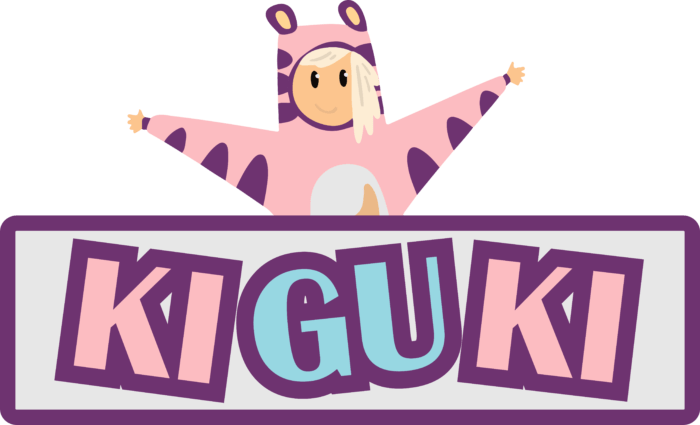Alternative fashion is a style statement that has become increasingly popular in recent years, with more people embracing it as an expression of their identity. But where did this trend come from? In this article, we will explore the origins of alternative fashion, looking at the various subcultures that have shaped it over the years, including punk, goth, Harajuku street style, grunge, and cyberpunk.
Author
-

Meet the creative minds behind Team Kiguki, your go-to destination for all things kawaii fashion! Led by a passionate team of trendsetters and fashion enthusiasts, Team Kiguki is dedicated to bringing you the latest and most adorable styles straight from the heart of kawaii culture. With a keen eye for detail and a love for all things cute, our team works tirelessly to curate a collection that reflects the whimsical charm and vibrant colors of kawaii fashion. Join us on our journey as we spread the joy and creativity of kawaii fashion to fashionistas around the world. Get ready to embrace your inner kawaii with Team Kiguki!
Alternative fashion has been around for centuries in some form or another; however, it was only in the late 20th century that it began to take shape as a distinct movement. This shift can be attributed to the rise of various youth-oriented subcultures such as punk, goth, and grunge which provided an outlet for young people to express themselves through clothing choices that were different from mainstream styles at the time.
The Origins of Alternative Fashion
Punk was one of the first subcultures to have a major influence on alternative fashion trends. Punk emerged in the mid-1970s as a reaction against traditional values and social norms; it was characterized by loud music, anti-establishment attitudes, DIY culture, and outrageous fashion statements such as ripped clothes, spiked hair, and safety pins adorning every outfit. Punk’s influence can still be seen today in many alternative fashion trends; for example, ripped jeans are still a popular choice amongst those who embrace alternative styles.
Punk Subculture and its Influence on Alternative Fashion
Gothic culture emerged soon after punk did in the late 1970s/early 1980s; while punk was all about rebellion against society’s conventions, goth embraced darkness instead – both literally (in terms of clothing color palette) and figuratively (in terms of exploring death & mortality). Goths often wore black clothes adorned with lace & velvet details along with heavy eyeliner & dark lipstick; these characteristics are still seen today in many alternative fashion looks – particularly those inspired by vampire culture or steampunk aesthetics.
Goth Subculture and its Influence on Alternative Fashion
Harajuku street style is one of the most iconic examples of alternative fashion today – but where did it come from? Harajuku is an area within Tokyo renowned for its vibrant street style scene; this look originated in the early 2000s when young Japanese teens began experimenting with bright colors & bold patterns to create unique looks that stood out from mainstream trends at the time. Today you can find elements of Harajuku street style everywhere – from pastel Lolita dresses to colorful gyaru wigs!
Japanese Harajuku Street Style and its Influence on Alternative Fashion
Grunge is another influential subculture that has had a huge impact on alternative fashion over the years; originating in Seattle during the late 1980s/early 1990s as an offshoot of punk & metal music scenes, grunge was characterized by flannel shirts worn over t-shirts along with combat boots or sneakers – all topped off with messy hairstyles & minimal makeup looks (if any). While grunge may not be as popular today as it once was, you can still find traces of it in many modern alternatives looks such as oversized hoodies paired with combat boots or Doc Martens shoes worn without socks!
Cyberpunk and its Influence on Alternative Fashion
Finally, we arrive at cyberpunk – a genre that has become increasingly influential over recent years due to films like Blade Runner 2049 & Alita Battle Angel drawing attention to this futuristic aesthetic once again! Cyberpunk draws inspiration from science fiction stories set in dystopian futures where technology reigns supreme; think neon lights combined with metallic fabrics & sci-fi inspired accessories like goggles or robotic limbs! This look is becoming more popular amongst those who embrace alternative styles due to how easily adaptable it is – you can make your unique cyberpunk look simply by combining pieces from different genres (e.g., combining gothic elements like lace skirts with futuristic neon accents).
Conclusion
In conclusion, then we can see that there are many different influences behind modern-day alternative fashion trends – from punk to goth to Harajuku street style & beyond! Each subculture has contributed something unique to this ever-evolving aesthetic which continues to evolve even now thanks to new generations embracing these styles for their expression purposes! For those looking for even more inspiration when creating their unique looks then why not check out Kiguki – our German kawaii brand based here in Nürnberg offers plenty of options sure to satisfy everyone’s tastes!
Kiguki – Check out our Kawaii fashion products!
.
At Kiguki we offer a wide variety of kawaii clothing items perfect for expressing your style – whether you’re into punk rock or pastel princesses we have something sure to suit your tastes! From cute frilly dresses perfect for clubbing nights out or cosplay events to comfy panda hoodies perfect for lazy days spent indoors – whatever your style may be check us out today and start expressing yourself through our amazing range of kawaii clothes!
FAQ
Where does the alternative style come from?
It originally came from subcultures like emo goth hip hop cyberpunk and Japanese lolita fashion. Much of alternative fashion derives not only from the punk style but also from punk music. According to Style on Vega alternative fashion and youth subculture are truly inseparable.
What defines alternative fashion?
Alternative fashion or Alt-fashion is fashion that differs from mainstream commercial fashion.
What was the alternative fashion in the 60s?
Ponchos Moccasins Love Beads Peace Signs Locket Necklaces Chain Belts Long sleeves with polka dots and beads were popular fashions in the late 1960s in the hippie subculture. Both men and women wore tie-dyed denim shirts. And Jesus scarf.
What aesthetics are similar to alt?
Some popular looks under the alternative beauty umbrella are an emo goth punk hipster. Today this beauty has become a part of our lives through alternative beauty clothing and accessories.
When did alt fashion start?
New trends in fashion emerged during the revolutionary lull when Soviet fashion died an ignominious death as it was trampled underfoot by imported products and the new tastes of ordinary citizens. During 1985-1995 alternate figures became symbols of the changing times and characteristics of perestroika.
When did alternative culture start?
From the 1950s to the 1980s alternative culture became more unconventional and socially acceptable. The so-called peak of this movement was the 1990s the height of alternative culture.
Author
-

Meet the creative minds behind Team Kiguki, your go-to destination for all things kawaii fashion! Led by a passionate team of trendsetters and fashion enthusiasts, Team Kiguki is dedicated to bringing you the latest and most adorable styles straight from the heart of kawaii culture. With a keen eye for detail and a love for all things cute, our team works tirelessly to curate a collection that reflects the whimsical charm and vibrant colors of kawaii fashion. Join us on our journey as we spread the joy and creativity of kawaii fashion to fashionistas around the world. Get ready to embrace your inner kawaii with Team Kiguki!


